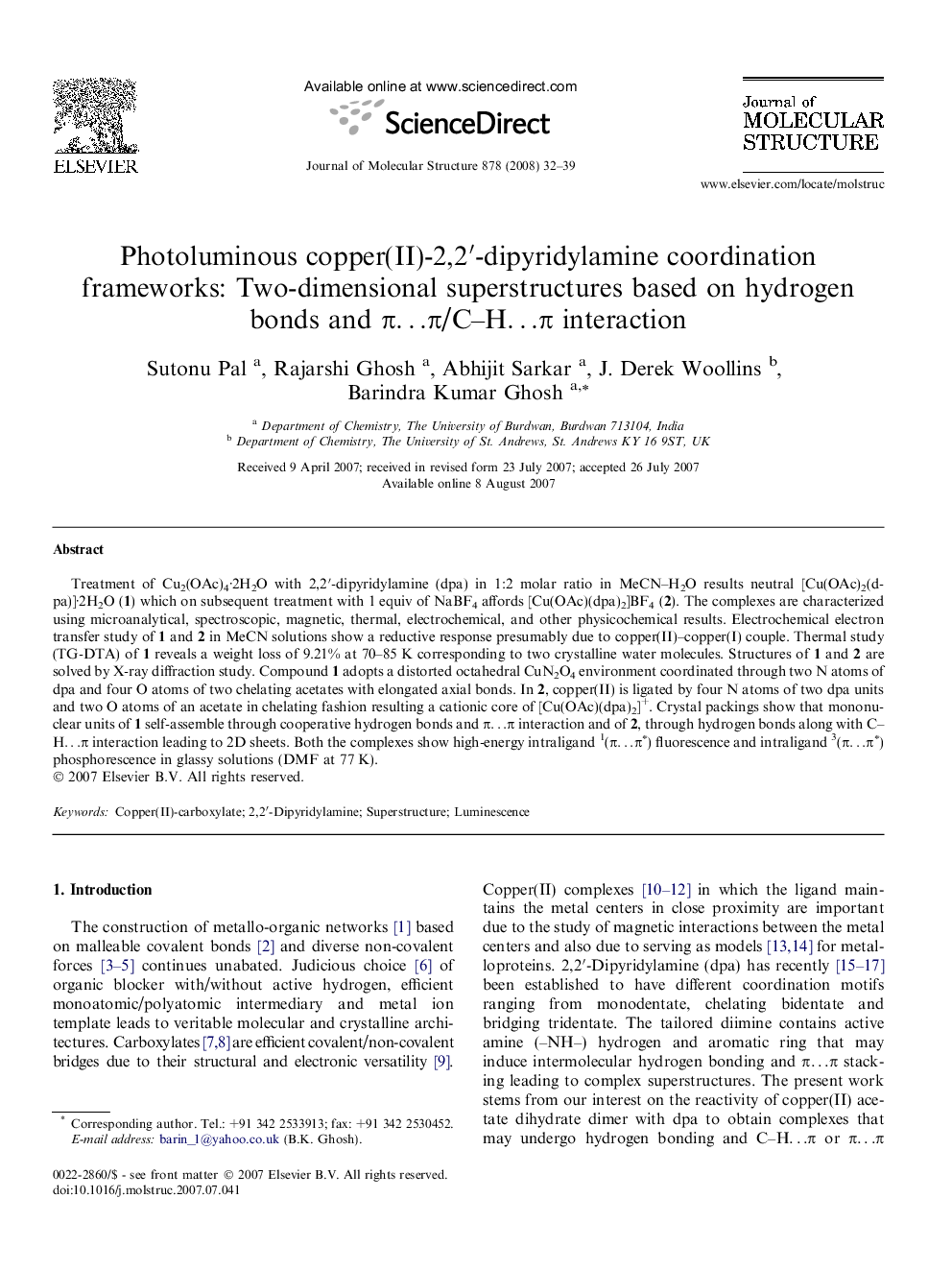| Article ID | Journal | Published Year | Pages | File Type |
|---|---|---|---|---|
| 1406998 | Journal of Molecular Structure | 2008 | 8 Pages |
Abstract
Treatment of Cu2(OAc)4·2H2O with 2,2â²-dipyridylamine (dpa) in 1:2 molar ratio in MeCN-H2O results neutral [Cu(OAc)2(dpa)]·2H2O (1) which on subsequent treatment with 1 equiv of NaBF4 affords [Cu(OAc)(dpa)2]BF4 (2). The complexes are characterized using microanalytical, spectroscopic, magnetic, thermal, electrochemical, and other physicochemical results. Electrochemical electron transfer study of 1 and 2 in MeCN solutions show a reductive response presumably due to copper(II)-copper(I) couple. Thermal study (TG-DTA) of 1 reveals a weight loss of 9.21% at 70-85 K corresponding to two crystalline water molecules. Structures of 1 and 2 are solved by X-ray diffraction study. Compound 1 adopts a distorted octahedral CuN2O4 environment coordinated through two N atoms of dpa and four O atoms of two chelating acetates with elongated axial bonds. In 2, copper(II) is ligated by four N atoms of two dpa units and two O atoms of an acetate in chelating fashion resulting a cationic core of [Cu(OAc)(dpa)2]+. Crystal packings show that mononuclear units of 1 self-assemble through cooperative hydrogen bonds and Ïâ¦Ï interaction and of 2, through hydrogen bonds along with C-Hâ¦Ï interaction leading to 2D sheets. Both the complexes show high-energy intraligand 1(Ïâ¦Ïâ) fluorescence and intraligand 3(Ïâ¦Ïâ) phosphorescence in glassy solutions (DMF at 77 K).
Related Topics
Physical Sciences and Engineering
Chemistry
Organic Chemistry
Authors
Sutonu Pal, Rajarshi Ghosh, Abhijit Sarkar, J. Derek Woollins, Barindra Kumar Ghosh,
